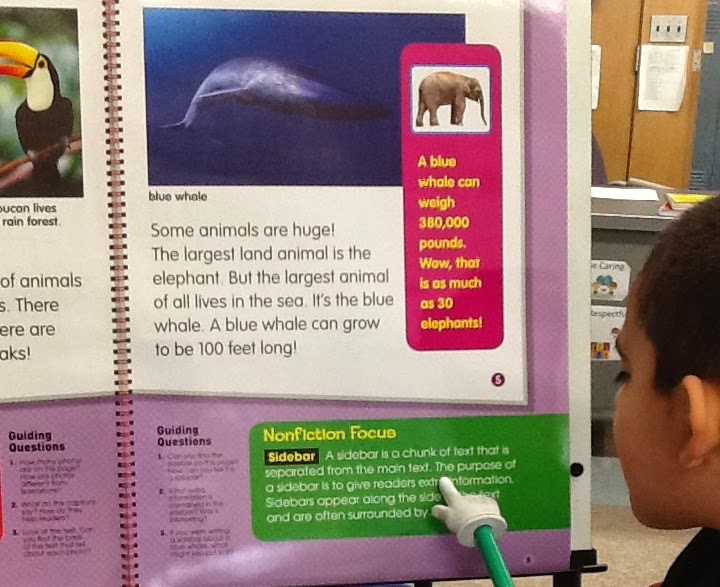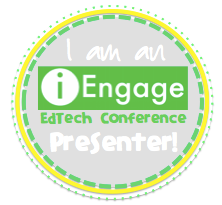 |
| My favorites! |
Day 14: Favorite picture books or novels to teach with...
The students I work with are generally a minimum of one and a half years below grade-level in reading. The focus commonly consists of using "think alouds" to support the reading strategies my students often lack, as well as teaching them to use nonfiction text features to gain a deeper understanding of nonfiction texts. My focus points have to be modeled, modeled, modeled by me and then practiced, practiced, practiced by the students... over and over again. Repetition is the key to success!
The books I often turn to for support are Teaching Reading with Think Aloud Lessons and Introduction to Nonfiction: Write-on/ Wipe-off Flip Chart. Please click on the title of each book to learn more. Once the strategies have been taught, the pages of these books become Anchor Charts to serve as reminders for the students. During guided reading, the students independently apply what they've learned, but also have support from me, when needed.
 |
| I love the feature of writing prompts that reinforce the strategies in Teaching Reading with Think Aloud Lessons! |
The pictures below represent a review, prior to the students practicing the strategies independently.
 |
| Examples of Introduction to Nonfiction from my classroom. |
 |
| Title examples from the Blue Kit |
 |
| The students are using the books for strategy practice and reader's theater in my room. |
When I'm taking running records or making general comments about a reader's strategy use in my assessment notebook, I take into account what the reader's strengths are and what areas need to be developed. Often the weaknesses are paying attention to meaning and fluency.
Many of the struggling readers I assist are English-language learners. Prior to my students reading any text, I note what skills should be a focus. For instance, when idioms appear in our guided reading books, I use specific read alouds that will reinforce the meaning of idioms. English-language learners often do not understand idioms, which then causes a break-down in their comprehension. However, reading aloud fun stories that pique student motivation, provide necessary background knowledge for deeper comprehension of future stories and allow students to hear what good, fluent reading should sound like can be beneficial. Since I used idioms as an example, here are some of my favorite titles to support the understanding of them: There's a Frog in My Throat!, Muddy as a Duck Puddle and Other American Similes, and Raining Cats & Dogs.
For fluent reading, knowing the use of punctuation is a must! If my students are reading like monotone robots or ignoring punctuation like speedy race cars, I use the following read alouds as a fun way to address those areas: Twenty-Odd Ducks: Why EVERY Punctuation Mark Counts!, The Girl's Like Spaghetti: Why You CAN'T Manage Without Apostrophes! and my favorite Eats, Shoots & Leaves: Why Commas Really DO Make a Difference!
Well, those are a few books I use with my students. I hope this post was useful to someone out there. Thanks for stopping by and a big shout-out to Michelle over at Bigtime Literacy for her Blogging Challenge topic.





































Thanks for sharing all of these texts!
ReplyDeleteMy pleasure. Hope they're helpful! ;)
DeleteThanks for sharing all of these texts.
ReplyDeleteMy favorites are the idiom books. These can be really difficult for concrete thinkers to get - the illustrations/humor help.
ReplyDeleteAgreed! Thanks, Sue. ;)
ReplyDelete